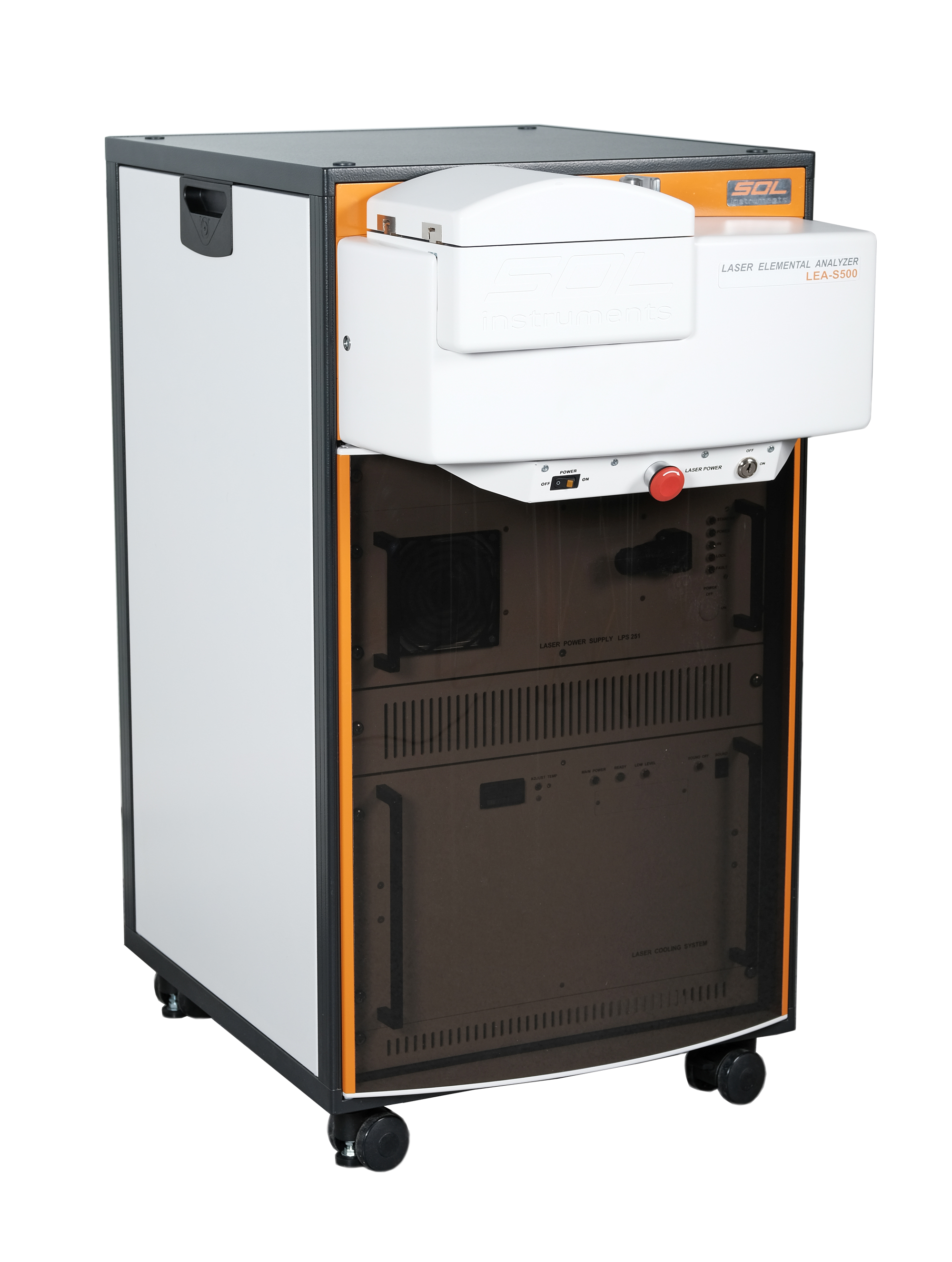產品介紹
-
-
LEA-S500® LIBS Elemental Analyzer
LEA-S500 – is a modern powerful atomic - emission spectral instrument with multichannel spectrum registration, combining in itself innovation technologies in the area of laser, spectral, measuring, digital equipment and software and permitting elemental (chemical) analysis of a sample in minutes. The detectable elements are from H to U, measuring range is to 100%. Necessary weight of the analyzed material is from 50 nanograms. The time period of multi-element analysis including sample preparation is 1 – 15 minutes. 400 analyses on determination of material homogeneity take about 7 minutes.
產品說明
|
LEA-S500 – is a modern powerful atomic - emission spectral instrument with multichannel spectrum registration, combining in itself innovation technologies in the area of laser, spectral, measuring, digital equipment and software and permitting elemental (chemical) analysis of a sample in minutes. The detectable elements are from H to U, measuring range is to 100%. Necessary weight of the analyzed material is from 50 nanograms. The time period of multi-element analysis including sample preparation is 1 – 15 minutes. 400 analyses on determination of material homogeneity take about 7 minutes. LIBS LIBS LIBS LIBS 雷射誘導擊穿光譜 Two-pulse nanosecond laser source of spectra excitation, due to high energy, power and temporal stability, provides a maximal reproducibility of the analysis results and low detection limits of chemical elements and compounds. Simultaneously it provides arc and spark modes of spectra excitation. 雷射誘導擊穿光譜 High-quality light throughput aberration-free high-resolution spectrograph provides accurate and reliable measurements. Unique detection system of short pulsed light signals provides extremely low limits of elements detection and a linearity of concentration dependences in a wide range.雷射誘導擊穿光譜 |
Detection limitsAdvantagesSoftware
|
|
|
one-pulse spectra excitation mode |
Two-pulse nanosecond laser In the elemental analyzer LEA – S500 plasma of a sample material, arising due to the treatment of material with powerful light pulses, is used as a light source to obtain an atomic - emission spectrum. It has been experimentally revealed, that when a sample is treated with two successive laser pulses (with time delay not exceeding the plasma lifetime) an essential growth of intensity and spectral lines stability in comparison with one-pulse excitation mode is provided. The given effect reduces substantially the lower limit of elements detection, increases measurements accuracy, extends analytical potential owing to excitation of lines with high ionization energy. |
|
|
two-pulse spectra excitation mode
Our innovative solutions guarantee:> High accuracy and precision determination of elements and their compounds (oxides) in the samples> Low detection limit of elements (from 0.01 ppm to 1ppb) > Analysis of various elements in any conductive, nonconductive solid (monolithic and powder) samples > Use of analytic lines at the optimal concentration sensitivity, free from spectral overlaps > Maximal efficiency of analytical light signal > Ease at operation and service > Safe operation and protection of personnel from harmful factors |
Detection system Use of digital cameras with multi-element spectrum detection systems in spectral instruments is conditioned by a number of advantages before the traditional detection systems (photo-electronic multipliers, photo-plates and etc.). The main of them are: the opportunity of simultaneous detection of a wide spectrum range; high-speed performance, providing detection of spectra excited with frequency pulsed sources, what allows one to make a large number of measurements per a time unit (in our case it is 20 times per second); wide range of spectral sensitivity; low dark signals (noise); wide dynamic range. As a radiation receiver in digital cameras matrix charge-coupled devices (CCD) are used, which are referred to the type of photosensitive (photoelectric) charge-transfer devices (CTD). Quantum efficiency of modern semiconductor radiation receivers is 90% and higher. Spectrograph Spectrograph performs radiation spectral analysis. This analysis is realized in optics by means of an element deviating the beams with various wavelengths to different angles. |
產品應用
> Glass industry
> Cement industry
> Manufacturing of ceramics
> Geological industry
> Semiconductor industry
> Ferrous and non-ferrous metallurgy
> Construction materials
> Forensic science
> Scientific research in the institutes and laboratories
> Material science
> Engineering industry
> Mining and processing of raw materials
> Environment protection
> Archaeology
> Agriculture (feed, tea production)
> Medicine
> Pharmacology
> Certification
Laser elemental analyzer LEA-S500 is applied for qualitative, semi-quantitative and quantitative elemental (chemical) analysis of raw material, components, additives, admixtures, inclusions at all stages of manufacturing process; for control of finished products at factories; for scientific investigations.
The instrument allows to perform both general averaged multi-element analysis of a sample and local analysis of small
volume and mass.
The instrument is of great importance for the organizations where much care is taken about their personnel health.
LEA-S500 provides safe chemical analysis of the materials and components. An operator is completely protected from
harmful factors connected with the analysis.
Only several hours are needed for the instrument operation training.
產品規格
Detection limits
Detection limit means a minimal content of the element in a sample, detected with the instrument.
|
||||||||||||||||||||||||||||||||||||||||||||||||||||||||||||||||||||||||||||||||||||||||||||||||||||||||||||||||||||||||||||||||||||||||||||||




